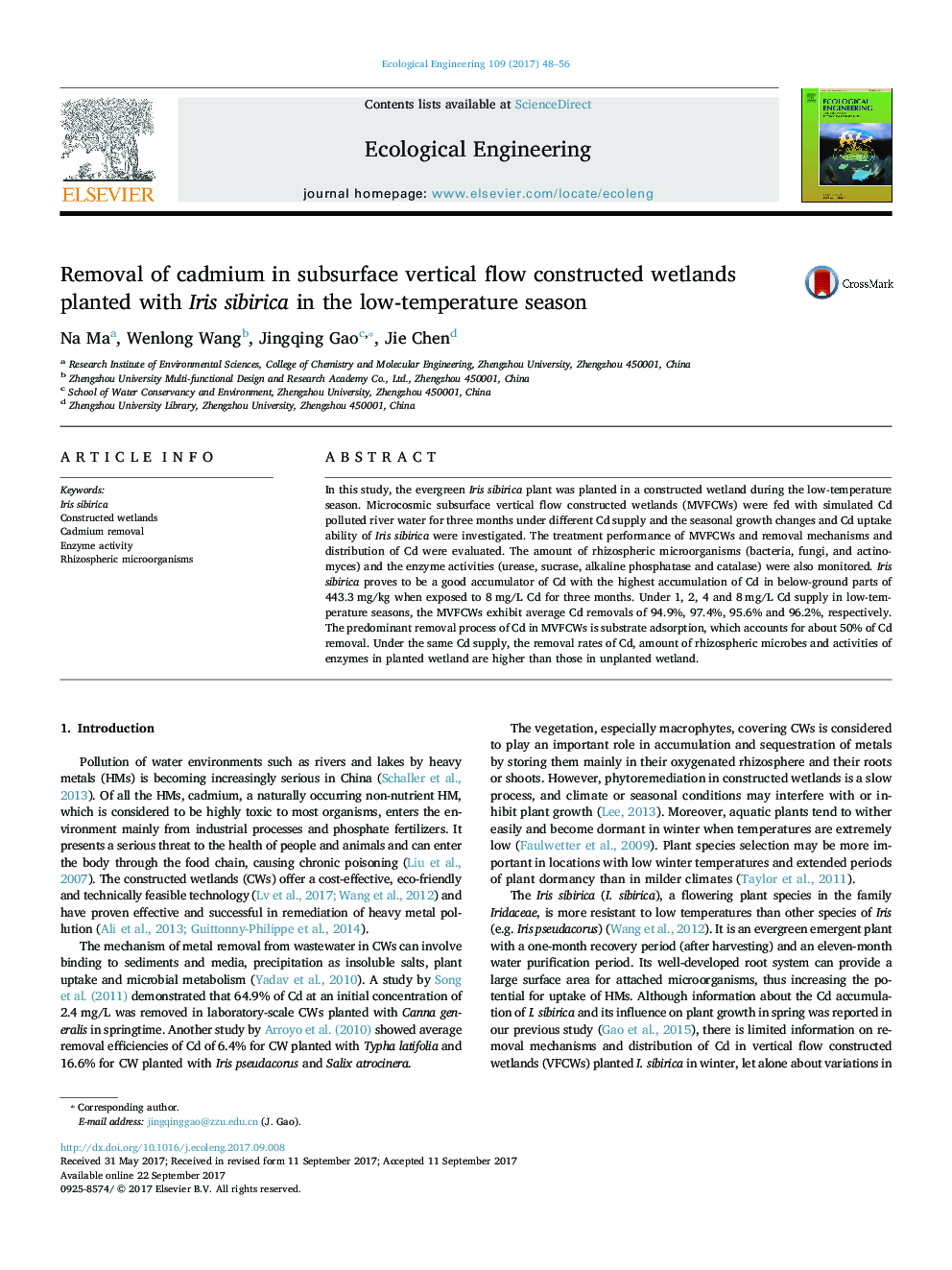| Article ID | Journal | Published Year | Pages | File Type |
|---|---|---|---|---|
| 5743643 | Ecological Engineering | 2017 | 9 Pages |
In this study, the evergreen Iris sibirica plant was planted in a constructed wetland during the low-temperature season. Microcosmic subsurface vertical flow constructed wetlands (MVFCWs) were fed with simulated Cd polluted river water for three months under different Cd supply and the seasonal growth changes and Cd uptake ability of Iris sibirica were investigated. The treatment performance of MVFCWs and removal mechanisms and distribution of Cd were evaluated. The amount of rhizospheric microorganisms (bacteria, fungi, and actinomyces) and the enzyme activities (urease, sucrase, alkaline phosphatase and catalase) were also monitored. Iris sibirica proves to be a good accumulator of Cd with the highest accumulation of Cd in below-ground parts of 443.3Â mg/kg when exposed to 8Â mg/L Cd for three months. Under 1, 2, 4 and 8Â mg/L Cd supply in low-temperature seasons, the MVFCWs exhibit average Cd removals of 94.9%, 97.4%, 95.6% and 96.2%, respectively. The predominant removal process of Cd in MVFCWs is substrate adsorption, which accounts for about 50% of Cd removal. Under the same Cd supply, the removal rates of Cd, amount of rhizospheric microbes and activities of enzymes in planted wetland are higher than those in unplanted wetland.
